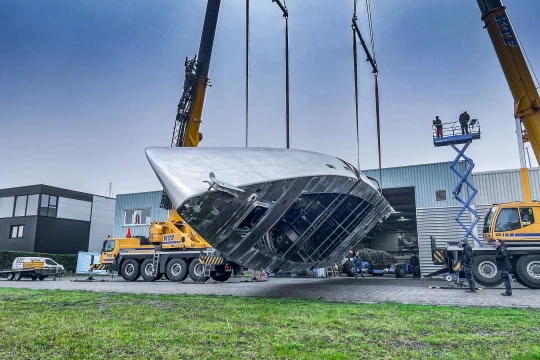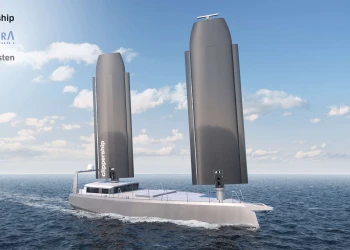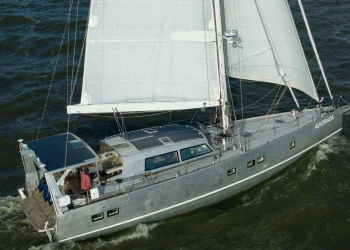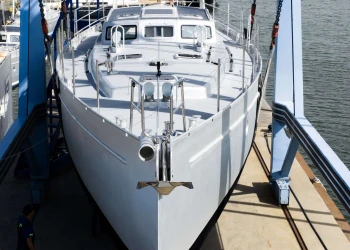
KM Yachtbuilders Pelagic 2 Hull turned
KM Yachtbuilders turns aluminium hull Pelagic 77
In the early morning, KM Yachtbuilders employees were out and about, the street was cordoned off, the cranes prepared, and it promised to be a beautiful Monday morning in Makkum. This was a milestone in the construction of the second Pelagic 77: the aluminium hull was turned exactly three years after the first Pelagic.
Following the success of the first Pelagic 77 'Vinson of Antarctica', it was decided to have a sister ship built this year. Construction started in March. The sister ship will be almost identical to the first one. The difference is found mainly in the engines: the second will feature more modern and environmentally friendly engines.
The first has found its home in South America and will focus mainly on sailing in the southern hemisphere with charter guests, educational programmes, training courses and the occasional scientific group, whereas the second Pelagic will remain in the northern hemisphere. This sister ship will be used for groups of scientists/biologists, film and video crews, and ecological purposes.
Like many KM Yachtbuilders vessels, the Pelagics are designed for high-latitude expeditions. Self-sufficiency, practical convenience while sailing, and simple, low-maintenance systems are critical, especially in remote areas without specialist help. The second Pelagic also features all the mod cons. The yacht will have two carbon masts to evenly distribute the sail area, and all sail systems, such as winches and jib rollers, can still be operated manually. Inside too, you will find everything a crew could desire. A large pilothouse provides a comfortable living area, and the six double cabins offer plenty of space to rest or step back.
The creator of the concept, Skip Novak, and the project manager for both ships, Jordy Griso, were of course present to witness the event.
The second Pelagic is scheduled for completion in early 2024.

Specifications Pelagic 77 #2
Yard: KM Yachtbuilders
Naval Architect: Tony Castro Design
Structural Design: Salt Technologies
LOA: 23,50m
LWL: 20,55m
Beam: 6,20m
Draught: 2,15m - 4,31m
Ballast: 18.000kg
Masts: 2x Axxon carbon masts
Engine: 2x Volvo Penta D4
Cabins: 6
Heads/Showers: 2






